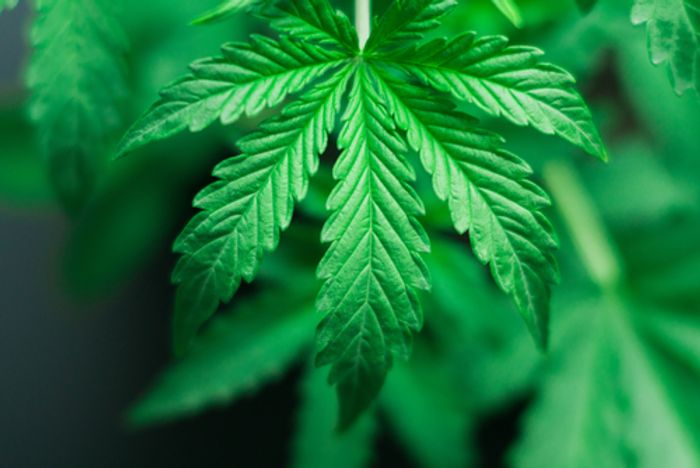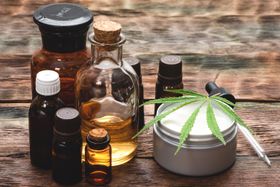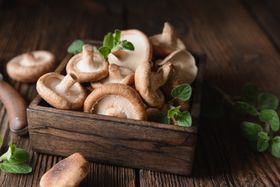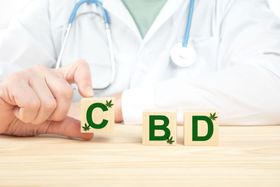The Effects of Sativa vs Indica on Anxiety, Depression, and ADHD
Updated January 7, 2024.

One of the oldest debates among cannabis and CBD users alike is the difference in the effects of Sativa and Indica strains. Common questions like "is Sativa an upper or downer?" often surface, and many individuals will claim that the science of these differences is concrete.
However, what they don't realise is that the effects of different CBD strains are far more complicated than simply "Sativa causes X, therefore Indica causes Y."
Cannabis strains are often categorized into two main types: sativa and indica, each known for distinct effects on users. It's important to note that individual responses to cannabis can vary, and the effects may depend on factors such as dosage, personal tolerance, and the specific chemical composition of the strain.
Sativa strains are commonly associated with uplifting and energizing effects. They are believed to be more suitable for daytime use and may promote creativity and focus. Some individuals with anxiety or depression may find that sativa strains offer a mood-enhancing experience without causing sedation, potentially making them a preferred choice for those seeking relief from mental health conditions.
On the other hand, indica strains are often associated with relaxation and sedation. These strains may be more suitable for evening or nighttime use, as they can have calming effects on both the body and mind. Indica strains are sometimes favored by individuals dealing with insomnia or high levels of stress, as they may help promote relaxation and alleviate physical tension.
This article will look at the effects most commonly attributed to Sativa and Indica strains of CBD, as well as why the notion of these differences is problematic.
Traditional Concepts of the Effects of Sativa and Indica
When people discuss the general effects of Sativa and Indica, they don't address the subtle differences between the various substrains. However, it can still be beneficial to understand the most commonly associated characteristics of the two primary strains.
Effects of Sativa and Indica on Mood and Body
When people ask the question of "How does Indica make you feel?" what they're really interested in is how true the most common belief of Indica exhibiting a relaxing effect is. Individuals associate Indica strains with a greater impact on your body, helping you remain calm and relaxed.
As such, people often ask a related question of "Will Sativa keep me awake?" The reason for this is the association between Indica making people feel relaxed, therefore being concerned that Sativa will do the opposite. This strain is most often associated with an uplifting feeling that's good for fighting somnolence and fatigue.
Effects of Sativa and Indica on Anxiety
Studies have shown that cannabis can potentially exacerbate certain mental disorders, particularly owing to conditions of anxiety when introducing high-THC strains. Conversely, studies have also suggested that CBD may exhibit anxiolytic (anti-anxiety) effects.
With this information in mind, traditional concepts of CBD strains would suggest that Indica would be good for anxiety, while Sativa would not.
However, even full-spectrum CBD products that have the highest allocation of THC in the UK (<0.2%) should not have enough THC to exacerbate any anxiety disorders. If you want to stay on the safe side, however, opt for broad-spectrum or CBD isolates that contain no THC at all.
Effects of Sativa and Indica on Depression
By traditional standards, both Sativa and Indica strains could be good for depression. The uplifting effects of Sativa could help improve mood, whereas the calming and relaxing effects could reduce the extremities of depression.
While the classic distinction between sativa and indica paints sativa as energizing and indica as relaxing, their effects on depression and anxiety are more nuanced. Some studies suggest indica-dominant strains, with their calming properties, might be better for anxiety, while others find both sativa and indica strains beneficial, depending on individual needs.
For depression, indica-dominant strains may be helpful for managing insomnia, a common symptom, while sativa-dominant strains with higher levels of the cannabinoid CBD have shown promise in reducing depressive symptoms.
Ultimately, individual responses vary, and it's crucial to consider factors like the specific strain's chemical composition and your own biochemistry before choosing.
Effects of Sativa and Indica on ADHD
This is similar to the concept of the effects of these strains on depression. Individuals claim that Indica strains can help reduce physical agitation, restlessness, and anxiety associated with ADHD. In contrast, others claim that Sativa strains could help improve the attention span by stimulating the brain.
When it comes to ADHD, opinions on the efficacy of sativa versus indica strains can vary. Some users report that sativa strains with their energizing effects may help with focus and attention, while others find that indica strains' calming effects can provide relief from hyperactivity. However, the research on cannabis and ADHD is limited, and individuals with ADHD should approach cannabis use cautiously, taking into consideration potential side effects and individual responses.
Why Traditional Concepts of Sativa and Indica are Problematic
Chemical Differences in Sativa vs Indica Plants
Typically, when discussing the differences between the components of Sativa and Indica strains, individuals tend to look purely at the ratios of the two main cannabinoids, THC and CBD. Characteristically speaking, Sativa strains often contain a higher THC: CBD ratio, whereas Indica strains often contain a higher CBD: THC ratio.
Already, you can begin to see why this is problematic when discussing the differences in CBD products that don't actually contain THC.
What this method of assessing strains lacks is the presence of all the other components in the cannabis plant. Aside from almost a hundred other cannabinoids, there are also varying numbers and concentrations of terpenes and flavonoids that all present different effects. Even two different Indica strains can have totally different concentrations of terpenes, flavonoids, and cannabinoids that exhibit notable differences in effects.
Rarely Discussed Cannabinoids Matter
Aside from the beneficial properties of CBD and THC, there are a number of other cannabinoids that are just as beneficial. For example, cannabigerol (CBG) on its own has been noted by researchers to have potentially beneficial effects on anxiety and depression due to exhibiting a calming and relaxing effect similar to traditional conceptions of Indica strains.
Terpenes Matter
Terpenes are not just responsible for the way the plant smells and tastes. In fact, with over a hundred different terpenes found in cannabis, they can be as important in defining the specific effects of various strains as CBD and THC.
For example, limonene, a terpene commonly found in citrus and often used in aromatherapy, is associated with an energising effect that stimulates the production of serotonin, similar to traditional concepts of Sativa strains.
Conclusion: What Does This Mean for You?
All of this information doesn't necessarily mean that traditional concepts of Sativa and Indica strains are strictly a bad thing. On the contrary, most reputable CBD companies already know and understand these differences and merely use these traditional labels to make it easier for the consumer to make informed decisions.
Chemical compositions of refined CBD products like oils and e-juices will vary only slightly and most often be classed into 3 main categories:
- Full-spectrum products contain the most cannabinoids, terpenes, and flavonoids.
- Broad-spectrum products have strictly no THC and fewer components.
- Isolates contain strictly CBD and nothing else.
In fact, it is usually the raw CBD flowers that will contain the most diverse variations in chemical composition. What this means for you is that you should always make sure that the source of your CBD products is reputable and can provide third-party lab results proving the composition of all the important components.
Additionally, if you are looking for specific effects to help certain conditions, reputable and educated CBD companies will have products with a certain chemical composition that is more specific than simply "Indica vs. Sativa" to give specific effects. Often, they will be able to provide you with the effect you are looking for that will be more specific than simplistic Indica or Sativa labels.
It's also important to remember that people react differently to certain substances, and so you may have to go through some trial and error to find what specific product works best for you. » Take a look at Cannabotech's CBD based products for variety of conditions









